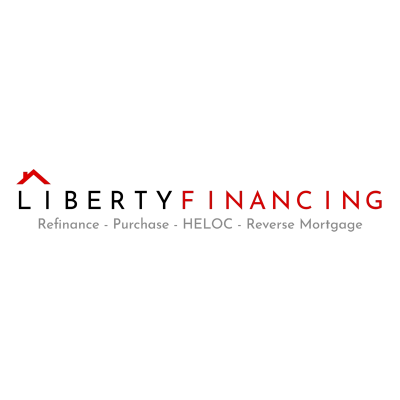How Do You Facilitate Cross-Functional Teamwork?
Navigating the complexities of cross-functional teamwork can be a daunting task, yet it is crucial for organizational success. This article delves into proven strategies and expert insights to master the art of collaboration across diverse teams. Discover the keys to designing effective training programs, streamlining communication, and aligning departmental efforts for optimal results.
- Design Cross-Functional Training Program
- Coordinate Tree Removal in Residential Area
- Develop AI-Driven Hiring Assistant
- Lead Sustainable Commercial Garden Transformation
- Expedite Home Sale for Distressed Seller
- Unify Teams for Successful Marketing Campaign
- Implement Cross-Team Scoping Call for Projects
- Streamline Film Localization with Modular Workflow
- Facilitate Product Launch with Clear Communication
- Deploy Fleet Tracking System Across Departments
- Improve Home-Buying Process Through Team Collaboration
- Launch Customer Portal with Cross-Team Effort
- Meet Product Launch Deadline Through Structured Communication
- Align Priorities for Successful Product Release
- Coordinate Departments for Website Project Success
- Adapt Quickly for On-Time Product Launch
- Create Common Language for Cross-Functional Projects
Design Cross-Functional Training Program
As a project management trainer at https://www.parallelprojecttraining.com/ I have facilitated numerous cross-functional projects, particularly in training and upskilling professionals across various industries.
One example that stands out is a project management training initiative designed to improve project delivery skills across multiple departments within a large organization.
The goal was to design and deliver a structured training program for professionals from diverse fields including IT, operations, finance, marketing, and HR; equipping them with essential project management methodologies such as Agile and PRINCE2.
Key Steps in Facilitating Cross-Functional Collaboration
1. Understanding Organizational Needs
- We conducted stakeholder interviews to assess training gaps and specific needs.
- We ensured the program aligned with the company's strategic objectives.
2. Building a Cross-Functional Team
- We assembled a team of subject matter experts (SMEs), HR professionals, and senior project managers to co-develop the curriculum.
- We assigned clear responsibilities, ensuring diverse perspectives were incorporated.
3. Developing a Tailored Training Approach
- We designed a blended learning approach with online modules, in-person workshops, and case studies tailored to different departments.
- We incorporated real-world project simulations to reinforce learning.
4. Facilitating Collaboration & Engagement
- Weekly planning meetings were organized to ensure alignment across departments.
- We used Microsoft Teams to track progress.
- Knowledge-sharing was encouraged through peer mentoring and breakout sessions.
5. Measuring Impact & Continuous Improvement
- We gathered participant feedback through post-training surveys and focus groups.
- We monitored key performance indicators (KPIs), such as project delivery efficiency and stakeholder satisfaction.
- Our company used insights to refine future training programs.
Outcome & Lessons Learned
- The program trained over 500 employees across multiple departments, leading to a 30% improvement in project success rates.
- Participants reported a significant increase in confidence when applying Agile and PRINCE2 frameworks in their projects.
Key lesson: Engaging cross-functional stakeholders from the start ensures that subsequent training content remains relevant and impactful.

Coordinate Tree Removal in Residential Area
One of the most challenging yet rewarding projects I've managed involved the removal of several hazardous trees in a densely populated residential area. This project required seamless cross-functional teamwork between our tree care specialists, city permit officials, utility companies, and homeowners. Given my more than 20 years in the industry and my TRAQ certification, I was able to assess the tree risks accurately and develop a strategy that prioritized both safety and efficiency. I coordinated closely with utility companies to safely manage power line clearances, ensuring our team could work without causing outages or property damage. My experience in customer service also played a key role, as I kept homeowners informed throughout the process, addressing concerns and setting clear expectations to maintain trust.
With multiple teams working together, communication was critical. I implemented a structured workflow where each phase, risk assessment, permitting, scheduling, and execution, was assigned to the right experts within our team. My deep understanding of arboriculture allowed me to make quick decisions when unexpected challenges arose, such as shifting weather conditions or additional structural weaknesses in the trees. Because of our meticulous planning and teamwork, the project was completed on schedule with zero incidents or damage, earning praise from both residents and city officials. This success reinforced my belief that experience, strong leadership, and a customer-first approach are the keys to executing complex projects efficiently.

Develop AI-Driven Hiring Assistant
At Zapiy.com, one of the most impactful cross-functional projects we tackled was the rollout of an AI-driven hiring assistant. This required seamless collaboration between our product development, marketing, and customer success teams to ensure we built something truly valuable for our users.
To keep everyone aligned, we set up a structured but flexible workflow. We started with joint discovery sessions where each team shared insights--engineering highlighted technical feasibility, marketing provided user expectations, and customer success flagged common pain points. From there, we developed a rapid prototyping approach, gathering feedback in real-time to refine the product.
One key decision was creating a shared dashboard where all teams could track progress and provide updates. This transparency prevented bottlenecks and made everyone feel invested in the final product. When we launched, the AI assistant was not just functional--it directly addressed real hiring challenges, thanks to the collective input of different departments.
The biggest takeaway? Cross-functional teamwork works best when every team sees themselves as a stakeholder in the outcome, not just a contributor.
Lead Sustainable Commercial Garden Transformation
One of the most rewarding cross-functional projects I facilitated was a large-scale garden transformation for a commercial property that required collaboration between landscapers, irrigation specialists, arborists, and soil scientists. The client wanted a sustainable, low-maintenance garden that would enhance the property's appeal while supporting biodiversity. Given my background in horticulture and over 15 years of experience in gardening, lawn mowing, and landscaping, I was able to lead this project effectively. I started by bringing together the right experts and ensuring clear communication between all teams. We conducted a thorough site analysis, assessing soil health, drainage, and existing plant life. With my expertise, I guided the team in selecting drought-resistant native plants, implementing an efficient irrigation system, and designing a layout that balanced aesthetics with functionality.
Throughout the process, my knowledge of plant care, soil composition, and sustainable gardening played a crucial role in decision-making. I ensured that the landscapers and irrigation team worked in sync so that the watering system complemented the plant selections, reducing long-term maintenance. The arborists helped with tree placement to maximize shade and improve microclimates, while the soil specialists amended the land to boost fertility. My ability to bridge these different areas of expertise ensured the project stayed on schedule and within budget. The result was a visually stunning, environmentally friendly landscape that exceeded the client's expectations. This project showcased how my experience and qualifications allowed me to manage a complex, multidisciplinary effort successfully while delivering a high-quality outcome.
Expedite Home Sale for Distressed Seller
One project where cross-functional teamwork was essential was a fast-tracked home sale for a distressed seller who needed to close quickly due to financial hardship. This required seamless coordination between our acquisitions team, title company, contractors, and closing attorney to ensure there were no delays.
To keep everyone aligned, I set up a shared progress tracker and scheduled daily check-ins to address any roadblocks. Our acquisitions team worked closely with the title company to clear liens, while contractors assessed the property to ensure we could take it as-is without delays. Meanwhile, our closing attorney expedited paperwork and verified all legal requirements.
Because of this tight collaboration and clear communication, we closed the deal in just 10 days--giving the seller peace of mind and allowing us to efficiently turn the property around. The key takeaway was that having clear roles, regular updates, and proactive problem-solving made all the difference in delivering a smooth transaction.
Unify Teams for Successful Marketing Campaign
I once led a marketing campaign launch that required input from product development, sales, and customer support. At first, it felt like herding cats--everyone had their own priorities, and communication gaps kept slowing things down. The challenge was getting each team to see the bigger picture instead of just their own piece of the puzzle.
To fix this, I set up short, focused check-ins where each team could voice concerns but also hear how their work impacted the final outcome. I also made sure we had a shared workspace where everyone could track progress in real time. Once people saw how their contributions fit into the whole, collaboration improved overnight. The campaign launched on time and generated a record number of leads. The key takeaway? Clear communication and transparency are everything. Cross-functional projects fail when teams work in silos, but when everyone understands the shared goal, things move fast.

Implement Cross-Team Scoping Call for Projects
One of our biggest challenges in custom software development was the misalignment between sales, engineering, and project teams. Projects often ran into scope issues as engineering was not sufficiently involved, causing rework and delays.
The fix? We introduced a Cross-Team Scoping Call at the proposal stage.
1. Sales shared client needs and expectations.
2. Engineering flagged feasibility issues upfront.
3. Project managers set realistic timelines early.
This simple change eliminated surprises. Clients got accurate timelines from day one, engineers worked with clear requirements, and project managers had fewer last-minute issues. More importantly, it created shared ownership among teams that weren't just handing off tasks; they were working as one from the start.
Real cross-functional teamwork isn't about smoother handoffs; it's about removing the gaps between teams entirely.

Streamline Film Localization with Modular Workflow
I oversaw a challenging film localization project for a global documentary series that required careful coordination between audio engineers, translators, and transcribers.
Instead of working in order, I developed a modular workflow that allowed each team to work simultaneously. While language specialists concurrently recognized cultural quirks that needed to be adjusted, transcription professionals recorded discussion. Then, audio engineers could smoothly combine the two components.
This parallel method maintained remarkable accuracy while cutting our normal schedule by 40%. In order for all specialists to understand how their unique contributions affected the final output, it was crucial to establish shared, real-time technical documentation.

Facilitate Product Launch with Clear Communication
In managing a recent product launch for my business, cross-functional teamwork was essential to ensure success. I facilitated communication between the marketing, design, and production teams by setting clear project goals and regular check-ins to align everyone's efforts. We used collaborative tools to share updates and track progress, ensuring that all departments were on the same page. I made sure each team understood how their work impacted the others, fostering a sense of ownership and accountability across the board. This approach helped us streamline the process, meet deadlines, and launch the product on time, exceeding our sales targets.

Deploy Fleet Tracking System Across Departments
The implementation of a new fleet tracking system required cross-functional cooperation. To ensure a smooth rollout, our operations, IT, and customer support teams had to collaborate. Customer service adopted new communication protocols, IT managed deployment, and operations determined the most critical tracking requirements.
We appointed a project lead to speed up decision-making and held weekly sync meetings to foster teamwork. One challenge was resistance to change, especially from long-serving staff members. We addressed this by demonstrating the system's improved efficiency and providing hands-on training. We saw a 20% reduction in vehicle downtime and faster customer inquiry response times in just three months, proving that cross-team collaboration leads to measurable business benefits.

Improve Home-Buying Process Through Team Collaboration
One project where cross-functional teamwork was essential was streamlining our home-buying process at WeBuyHousesQuick.ca. We needed to improve response times, simplify paperwork, and ensure smooth communication between marketing, sales, and legal teams.
To make this work, I set up weekly check-ins and used a shared project management tool so everyone could track progress in real time. Marketing focused on generating leads, sales handled negotiations, and legal ensured contracts were airtight. By keeping everyone aligned and addressing issues quickly, we cut deal closure time by 30%.
The key takeaway? Clear roles, open communication, and the right tools make cross-functional teamwork smooth and effective.
Launch Customer Portal with Cross-Team Effort
One project I worked on that required cross-functional teamwork was the launch of a new customer portal. We brought together IT, marketing, customer service, and operations teams to ensure every aspect of the portal met the needs of our users while aligning with our business objectives!
My role was to facilitate communication between the teams and ensure everyone had a clear understanding of the project goals and timelines. By organizing regular check-ins and creating shared goals, we were able to keep the project on track and identify potential roadblocks early. The result was a smooth launch with positive feedback from users and a more efficient experience for our customer service team.

Meet Product Launch Deadline Through Structured Communication
One project where cross-functional teamwork was essential involved launching a new product line under tight deadlines. The project required collaboration between sales, marketing, procurement, and operations, each with distinct priorities and challenges.
To facilitate teamwork, I implemented structured communication channels, ensuring alignment through weekly cross-functional meetings. We used a centralized project management tool for real-time updates, allowing teams to track progress and address roadblocks efficiently. By encouraging open dialogue and fostering a problem-solving mindset, we met the launch deadline while improving internal collaboration for future projects.

Align Priorities for Successful Product Release
What I believe is that cross-functional teamwork is the backbone of any successful project, and one of the most challenging yet rewarding experiences I had was leading a product launch that required collaboration between marketing, sales, product development, and customer support.
The challenge was aligning different priorities--marketing wanted a strong brand message, sales needed competitive pricing strategies, product development focused on technical feasibility, and customer support was concerned about handling inquiries post-launch. To bridge these gaps, I implemented a weekly cross-functional stand-up where representatives from each team shared updates, roadblocks, and dependencies.
One specific instance where this approach paid off was when marketing proposed a launch date that conflicted with product development's timeline. Instead of delaying the release, the teams collaborated to adjust feature rollouts--launching the MVP first while keeping additional enhancements for later phases. This not only kept the project on track but also ensured a smooth customer experience.
By fostering open communication and aligning goals early on, we successfully launched the product within deadline and exceeded initial sales projections by 20%. Cross-functional teamwork isn't just about collaboration--it's about creating synergy that drives results.

Coordinate Departments for Website Project Success
Website projects require work from several departments, such as content, SEO, design, and development. We have to ensure that each department has a strong understanding of the client's goals for the new website, and that everyone is on the same page with the project milestones and deadlines. Because one department starting their section might be dependent on another department finishing their section, we have to communicate quickly when something is off track and figure out how to mitigate any delays in delivering our work to the client.

Adapt Quickly for On-Time Product Launch
As a Project Specialist, I facilitated a product launch that required seamless cross-functional teamwork between marketing, design, and development teams.
I started by setting clear objectives and timelines, ensuring each department understood their role while maintaining open communication through regular check-ins and collaborative tools.
When challenges arose--such as delays in design assets--I worked closely with both teams to reprioritize tasks and find quick solutions without derailing the timeline. By fostering a culture of transparency and adaptability, we successfully launched the product on schedule, achieving strong engagement and positive feedback from stakeholders.

Create Common Language for Cross-Functional Projects
The first thing required to successfully run cross-functional projects is a common language.
Engineers speak differently from Product. Product speaks differently from QA. QA speaks differently from Sales.
Create a language with which you can communicate the requirements, execution steps, definition of done, and deployment.
In the world of Software Engineering, we would use "User Stories." This is a type of descriptive language that looks at the problem from the perspective of the user. "As a User of Product X, when I do Y, Z happens."
This language all people involved in the product can understand and gives a very clear definition of what is being worked on and released.






